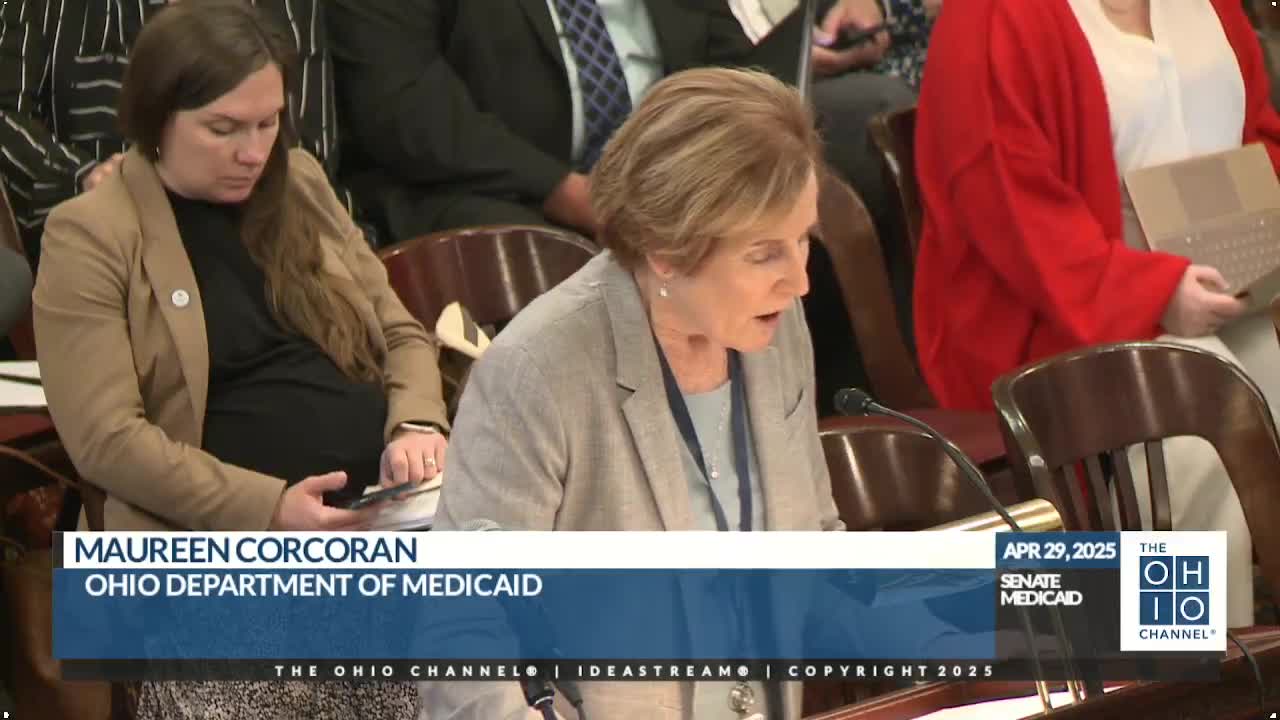Governor's budget advances funding for youth health services and Medicaid enhancements
April 29, 2025 | Medicaid, Senate, Committees, Legislative, Ohio
This article was created by AI summarizing key points discussed. AI makes mistakes, so for full details and context, please refer to the video of the full meeting. Please report any errors so we can fix them. Report an error »

In a meeting filled with discussions about the future of healthcare in Ohio, the Medicaid Committee gathered to review the governor's proposed budget, which aims to enhance services for some of the state's most vulnerable populations. As the committee members settled in, the atmosphere buzzed with anticipation over the potential impacts of the budget on youth, behavioral health, and essential services.
One of the key highlights was the introduction of continuous eligibility for children aged zero to three, a measure mandated in House Bill 33 during the previous budget cycle. This initiative, now funded in the governor's new budget proposal, promises to provide stability for young families, ensuring that their healthcare needs are met without interruption.
The conversation also turned to behavioral health, where the budget allocates funds for various support services. These include mobile response stabilization services, which aim to provide immediate assistance to individuals in crisis. The committee noted that the General Assembly had previously approved several capital projects for behavioral health, and this budget will ensure that the necessary Medicaid services are funded to support these initiatives.
Another significant proposal is the increase of the personal needs allowance for individuals in nursing homes and intermediate care facilities. Currently set at around $50, the governor recommends raising this amount to $100, a change that could greatly enhance the quality of life for many residents, particularly those with developmental disabilities.
Additionally, the budget outlines updates to the Medicaid school program, which will utilize local tax money as a match, ensuring that no state general revenue funds are required. This program is designed to provide essential health services to students, further emphasizing the state's commitment to supporting youth health initiatives.
As the meeting drew to a close, the committee members reflected on the importance of responsible stewardship of state funds while striving to meet the healthcare needs of Ohioans. The discussions underscored a collective commitment to providing humane and effective care, navigating the complexities of healthcare funding both locally and at the federal level. With a dedicated team behind these initiatives, the future of Medicaid in Ohio appears poised for positive change, promising better health outcomes for its residents.
One of the key highlights was the introduction of continuous eligibility for children aged zero to three, a measure mandated in House Bill 33 during the previous budget cycle. This initiative, now funded in the governor's new budget proposal, promises to provide stability for young families, ensuring that their healthcare needs are met without interruption.
The conversation also turned to behavioral health, where the budget allocates funds for various support services. These include mobile response stabilization services, which aim to provide immediate assistance to individuals in crisis. The committee noted that the General Assembly had previously approved several capital projects for behavioral health, and this budget will ensure that the necessary Medicaid services are funded to support these initiatives.
Another significant proposal is the increase of the personal needs allowance for individuals in nursing homes and intermediate care facilities. Currently set at around $50, the governor recommends raising this amount to $100, a change that could greatly enhance the quality of life for many residents, particularly those with developmental disabilities.
Additionally, the budget outlines updates to the Medicaid school program, which will utilize local tax money as a match, ensuring that no state general revenue funds are required. This program is designed to provide essential health services to students, further emphasizing the state's commitment to supporting youth health initiatives.
As the meeting drew to a close, the committee members reflected on the importance of responsible stewardship of state funds while striving to meet the healthcare needs of Ohioans. The discussions underscored a collective commitment to providing humane and effective care, navigating the complexities of healthcare funding both locally and at the federal level. With a dedicated team behind these initiatives, the future of Medicaid in Ohio appears poised for positive change, promising better health outcomes for its residents.
View full meeting
This article is based on a recent meeting—watch the full video and explore the complete transcript for deeper insights into the discussion.
View full meeting
